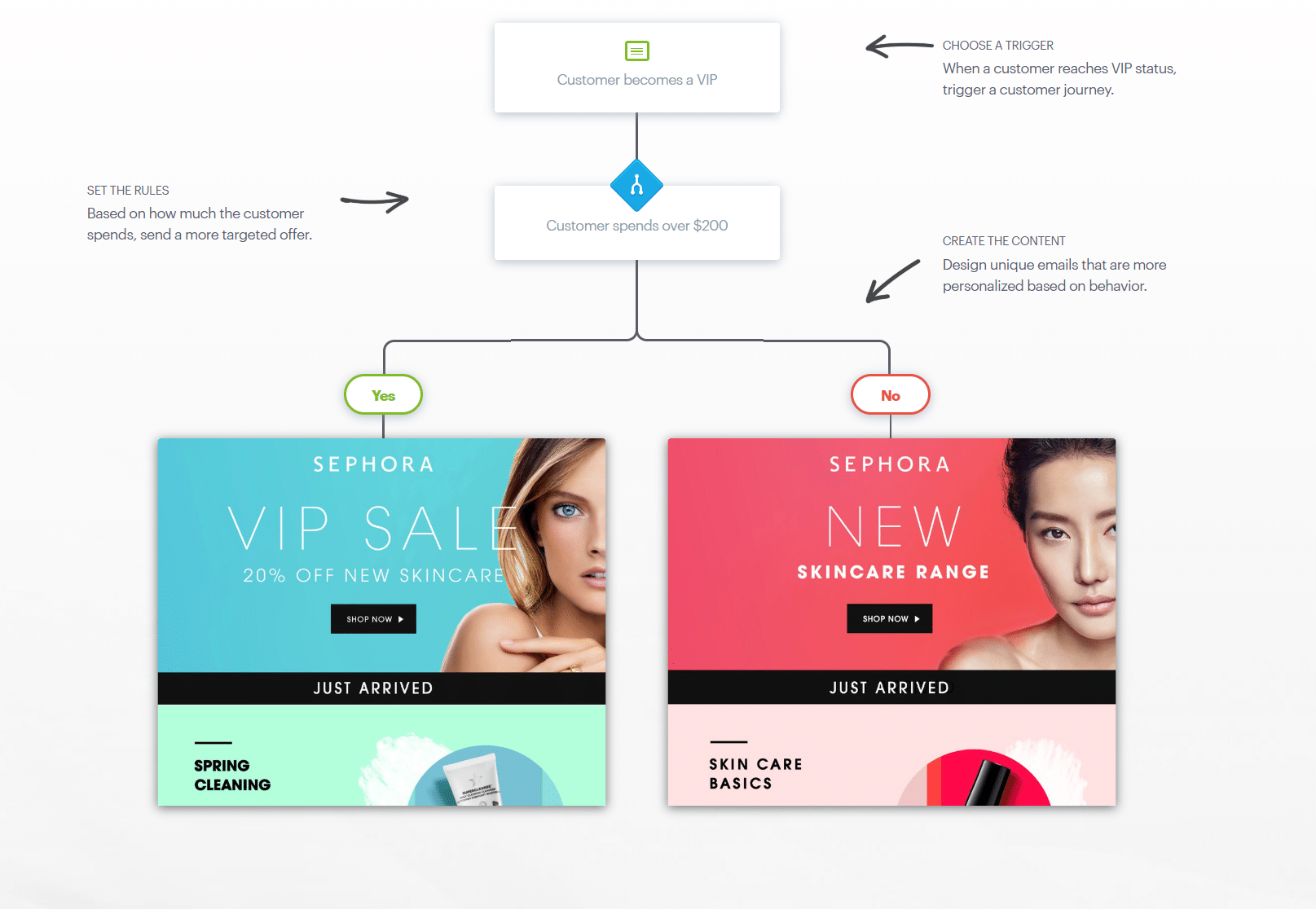Technology and artificial intelligence has made it easier than ever to collect information on your leads and customers. With this data, you can design personalized email campaigns.
61% of people prefer for brands to contact them through email over other channels, such as Facebook. Personalization can help you leverage your email marketing efforts and increase overall ROI.
Personalization can improve open rates and boost revenue by 760%.
How to personalize emails
Personalization involves much more than simply including a merge tag to display your subscriber’s real name in the subject line. You have plenty of options for providing your subscribers with a personalized experience.
The following are a few ways you can use data to personalize your subscribers’ email experience.
Milestones
Automation makes it easy to set up personalized email campaigns based on milestones.
For example, Sephora sends out pre-made triggered campaigns after subscribers spend a specific amount of money. If someone signs up for their loyalty program and spends $200, they receive a special thank you email along with custom coupons.

Source: Campaign Monitor
Segment based on gender, age, or location
You have virtually limitless options for breaking your list up into different groups based on age, gender, location, or other demographics. Segmentation can help you send campaigns with relevant content.
For example, it could be helpful to know whether or not someone is a parent or where they live so you can provide personalized product recommendations, coupons, and in-store events.
Adidas has personalization nailed down to a science with their triggered campaigns for new subscribers. In this email, Adidas recommended the subscriber visit a store’s grand opening near the location they signed up for the mailing list.

Source: Adidas
Past purchase history
By remembering your subscribers’ past purchase histories, you can create personalized content for future recommendations.
Purchase history can also help you narrow down possible demographics, like gender or age, if you’re lacking that information. Beyond product recommendations, you can use purchase history to curate newsletter content on relevant topics.
Browsing behavior
You can use subscriber browsing behavior to personalize a broad range of emails.
If you know which landing page they used to sign up for your list or which blog posts they’ve viewed, you can send them unique blogs through email.
You could also keep track of products your subscribers view and, later, send out personalized emails to retarget each subscriber with special coupons.
How to measure personalized email results
Log into your email service provider dashboard and click on the campaign or specific subscriber you want to monitor.
From there, you’ll be able to see if your personalization campaigns are working. Keep an eye on your delivery rates, open rates, click rates, and bottom-line conversions.
If you’ve personalized your emails but your subscribers still aren’t opening them, consider brushing up on your subject lines. People typically use the subject line to decide whether or not to open the email. Meanwhile, 69% of people will mark your email as spam based on the subject line.
Does it even matter?
Personalized emails are an important part of a dynamic email marketing strategy.
67% of people expect brands to provide personalized content. Not only that, but almost half of people get annoyed when brands only offer generic emails.
Email marketing is typically more effective than other forms of advertising—such as sponsored Facebook posts—because the content is usually much more relevant. If your email content meets your subscribers’ needs, they’re more likely to trust your brand and convert into customers.
What now?
Now that you understand how personalization works, you can incorporate it into your email marketing strategy.
Start segmenting your list into groups based on different information or demographics, send out a survey to your subscribers asking for more information about their interests and problems, and look at the behavioral data you’ve collected and start creating unique campaigns.
Are you ready to create some personalized campaigns? Check out these 8 examples to get started.